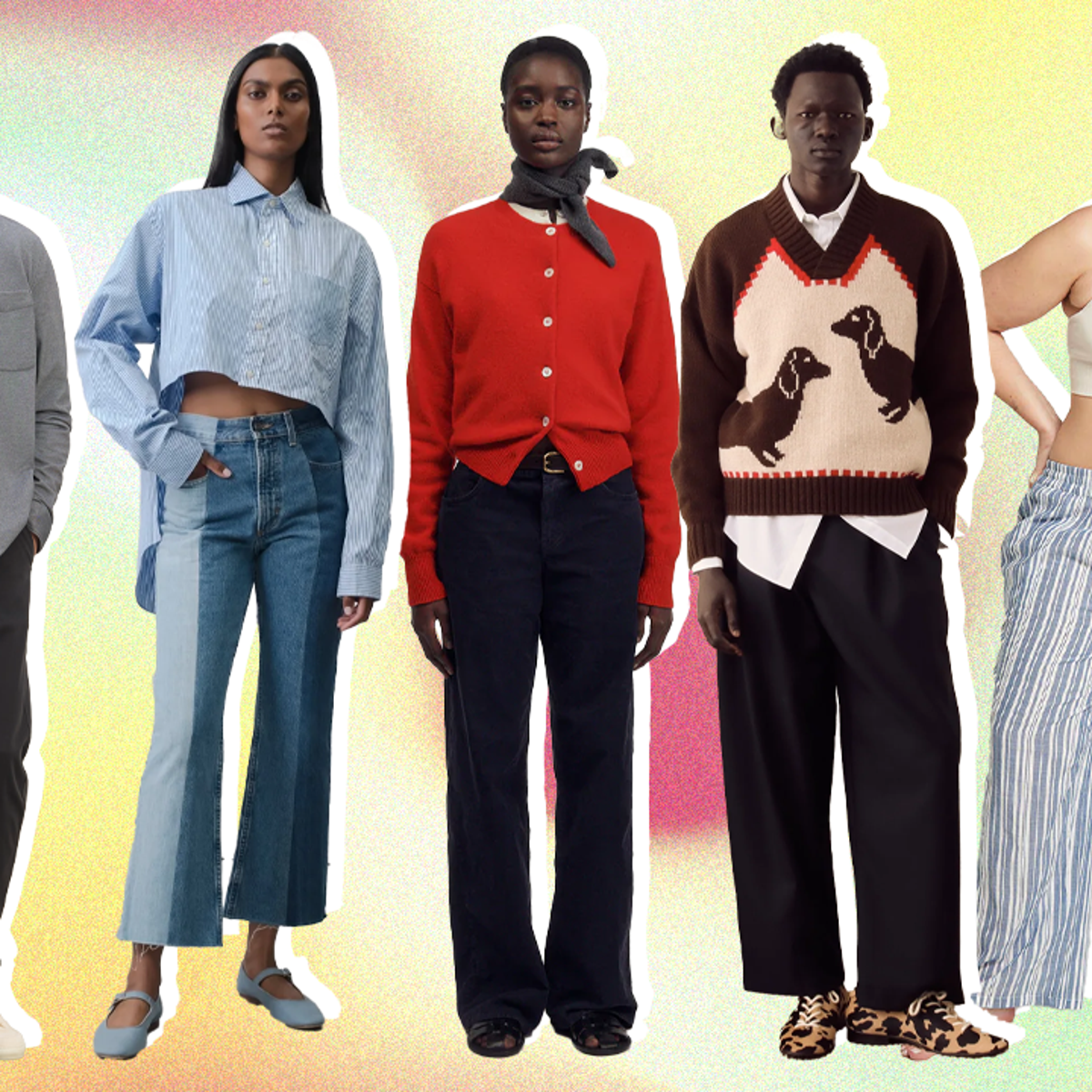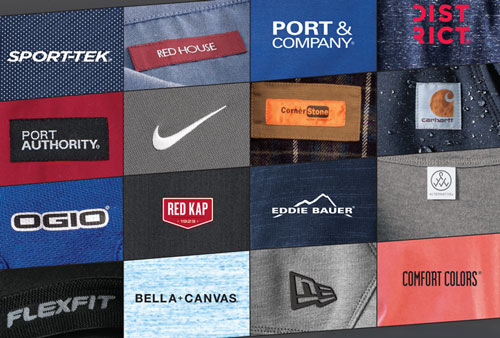Is Branded Clothing Really Better Because of the Fabric?
Is Branded Clothing Really Better Because of the Fabric?
Blog Article
Recognizing Clothes: The Importance of Material Selections in Your Closet
The option of textile in garments plays a crucial duty in both aesthetics and performance. Various materials provide differing degrees of breathability, comfort, and resilience, straight affecting the wearer's experience. Comprehending these nuances can boost one's wardrobe markedly. Yet, numerous neglect exactly how these selections can impact not simply individual design, yet also sustainability. What textile decisions could redefine your closet and align it with both style and duty?
The Role of Textile in Style and Functionality

Common Material Kinds and Their Qualities
When choosing apparel, understanding the qualities of common textile types is necessary for making notified selections. Cotton, a widely-used natural fiber, is understood for its breathability, gentleness, and convenience, making it suitable for sportswear and daily garments. Bed linen, one more natural option, boasts superb moisture-wicking residential or commercial properties and a distinct structure, perfect for cozy climates.Wool, often favored for its warmth and sturdiness, varies in excellence; merino woollen is soft versus the skin, while coarser kinds are used for outerwear. Artificial textiles like polyester and nylon use durability and resistance to wrinkles, making them prominent for activewear and traveling garments. Blends, which integrate all-natural and artificial fibers, can enhance capability while keeping convenience. By recognizing these textile features, individuals can pick clothing that aligns with their way of life and visual choices.
Breathability and Convenience: Choosing the Right Fabrics for Different Environments
Picking the ideal materials for different environments can significantly improve convenience and general wearability. Breathable products are essential in warm climates, as they allow air flow and moisture evaporation. Fabrics such as cotton, linen, and moisture-wicking synthetics successfully attract sweat away from the body, maintaining the wearer cool and dry. On the other hand, in colder climates, thicker materials like wool or fleece provide insulation while preserving breathability, making certain warmth without overheating.Additionally, the selection of material weight plays an important duty; lightweight textiles are better for summer, whereas larger choices are suited for winter wear. Recognizing the one-of-a-kind residential or commercial properties of each fabric makes it possible for individuals to clothe appropriately for varying weather condition problems. Inevitably, selecting breathable and comfy fabrics tailored to details climates can greatly improve everyday convenience and enhance the general experience of using apparel.
Resilience and Care: Exactly How Fabric Impacts Longevity of Your Closet
Picking the right products can significantly affect the toughness and care demands of a wardrobe. Fabrics such as cotton and polyester are understood for their resilience and simplicity of upkeep, making them ideal for day-to-day wear. In contrast, fragile products like silk and lace need more careful handling and specialized cleansing approaches, which can enhance the moment and initiative needed for care. Branded Clothing.Durability is also influenced by the textile's weave and coating; securely woven materials have a tendency to withstand wear and tear better than freely woven alternatives. Additionally, synthetic blends often supply boosted resilience, combining the very best top qualities of several fibers.Understanding the care instructions for every textile is essential, as inappropriate cleaning or drying page out can result in premature wear. Inevitably, choosing durable materials can lead to a longer-lasting wardrobe, minimizing the frequency of substitutes and adding to an extra sustainable style choice
The Influence of Textile on Fit and Silhouette

Lasting Fabric Options: Making Eco-Friendly Decisions
The influence of fabric extends past fit and shape to include environmental factors, motivating an expanding passion in lasting material choices. Eco-friendly textiles, such as organic cotton, hemp, and Tencel, are acquiring traction amongst customers who prioritize sustainability in their wardrobes. These products are frequently created with fewer chemicals and water, reducing their eco-friendly footprint.Additionally, recycled materials, made from post-consumer waste, use a cutting-edge remedy to the textile industry's air pollution you can check here issue. Brands increasingly accept transparency in their sourcing approaches, allowing consumers to make informed choices concerning their purchases.Choosing sustainable materials not only supports ethical methods yet likewise encourages the apparel industry to take on more responsible manufacturing techniques. As understanding of environmental concerns rises, people are advised to assess the long-lasting influence of their textile selections, fostering a motion in the direction of a more ecologically conscious and sustainable technique to fashion.
Elevating Style: How Material Can Transform a Clothing
While numerous may focus on shade and cut when choosing a clothing, the selection of textile plays a necessary role in raising design and enhancing general look. Different materials convey distinctive state of minds and messages; for instance, silk exhibits deluxe and sophistication, while jeans offers a laid-back, unwinded vibe. The texture and drape of a textile can substantially change the shape, with structured materials supplying a polished appearance and softer ones developing a much more fluid, relaxed aesthetic.Moreover, the weight of the textile influences wearability across seasons. Light-weight textiles like bed linen and cotton are suitable for summer, while much heavier materials such as wool and velvet offer warmth and beauty in chillier months. Recognizing material buildings, such as breathability and stretch, likewise equips individuals to make informed selections that improve convenience without endangering design. Inevitably, the appropriate material can transform a clothing from average to amazing, making it a crucial consideration in any kind of closet.
Often Asked Questions
Just how Do I Identify the Textile Content of My Clothing?
To recognize material web content, one can take a look at treatment tags, conduct burn tests for fiber identification, or get in touch with textile swatches. These approaches help separate materials, making sure informed choices for garments treatment and upkeep in daily wear.
Can Fabric Selection Affect My State Of Mind or Self-confidence?
Material selection can significantly influence an individual's mood and confidence. Branded Clothing. Specific products may stimulate feelings of convenience or beauty, while others can really feel unflattering or restrictive, inevitably affecting self-perception and emotional wellness throughout the day
What Fabrics Are Finest for Sensitive Skin?
For people with delicate skin, natural fabrics like cotton, bamboo, and linen are usually suggested. These products are breathable, hypoallergenic, and less most likely to cause irritability, making them appropriate options for convenience and skin health and wellness.
Just how Do I Effectively Clean and Take Care Of Different Fabrics?
To properly care and wash for various textiles, one must take into consideration each product's details needs, consisting of temperature level settings, cleaning agents, and drying out approaches, making sure longevity and preserving the textile's initial high qualities for perfect usage.
Are There Details Fabrics for Athletic or Performance Use?
Sports or performance wear commonly makes use of textiles such as nylon, spandex, and polyester. These materials are created for moisture-wicking, breathability, and versatility, improving motion and convenience throughout physical activities while supplying resilience and assistance. Conversely, in chillier environments, thicker fabrics like woollen or fleece provide insulation while preserving breathability, ensuring warmth without overheating.Additionally, the selection of fabric weight plays an essential duty; light-weight fabrics are better for summer season, whereas much heavier options are suited for winter wear. In contrast, fragile materials like silk and lace require more careful handling and specialized cleaning methods, which can boost the time and effort needed for care.Durability is additionally affected by the textile's weave and coating; tightly woven fabrics tend to stand up to wear and tear far better than freely woven options. In comparison, inflexible textiles can limit activity yet her comment is here give a traditional, polished look.Moreover, the density and texture of the textile can affect the aesthetic assumption of body shape. The impact of fabric expands beyond fit and shape to incorporate environmental elements, motivating an expanding interest in sustainable material choices. The texture and drape of a fabric can substantially alter the shape, with organized materials supplying a polished appearance and softer ones creating a more fluid, loosened up aesthetic.Moreover, the weight of the material influences wearability throughout seasons.
Report this page